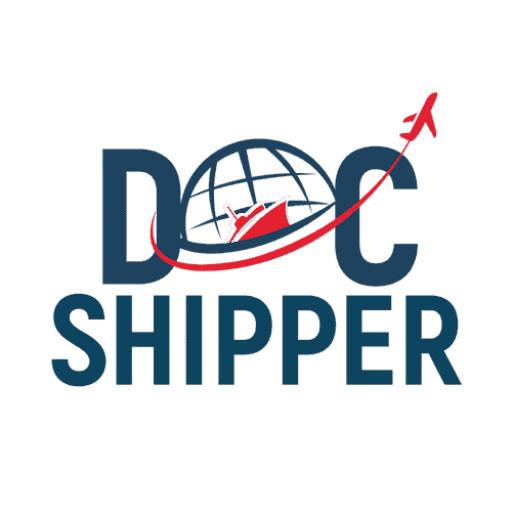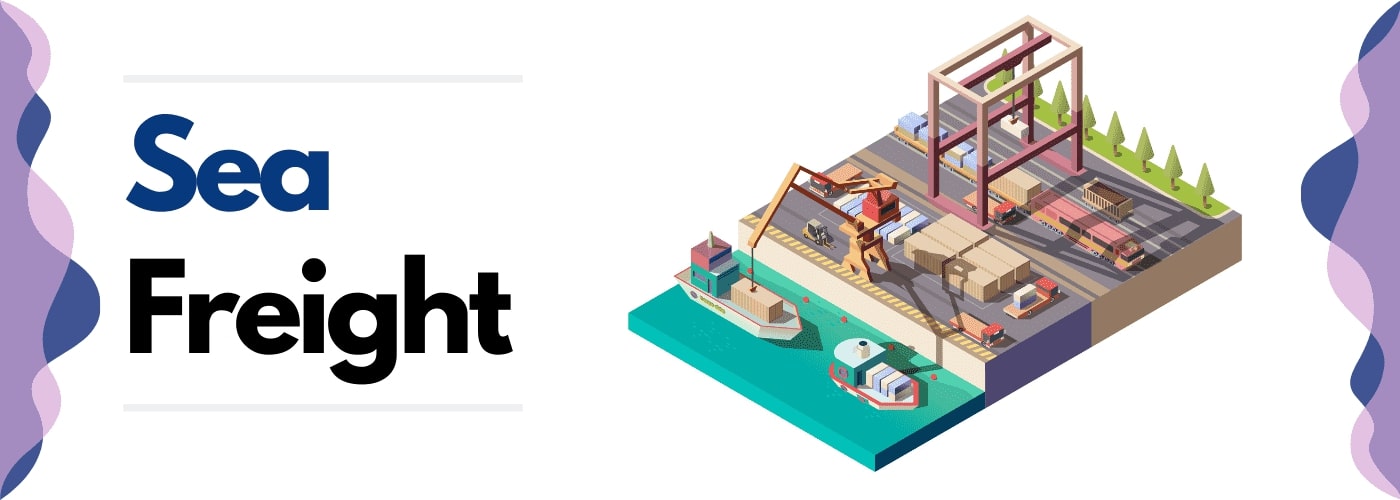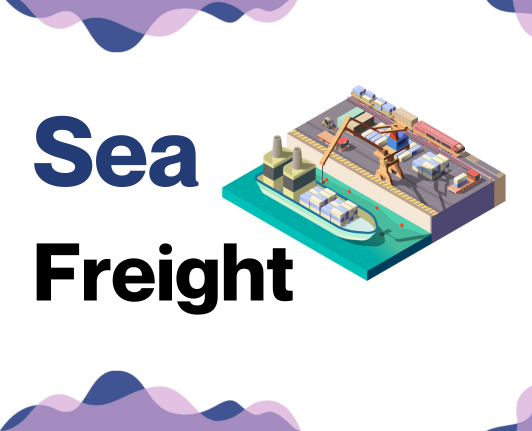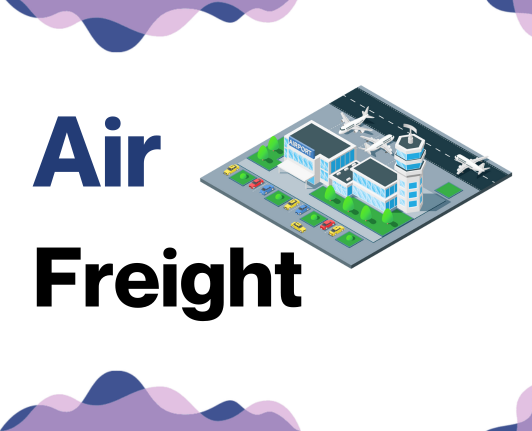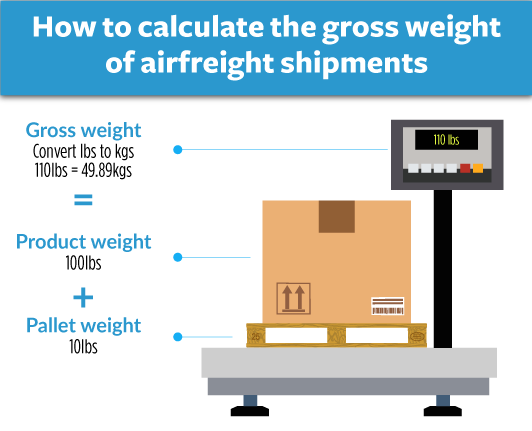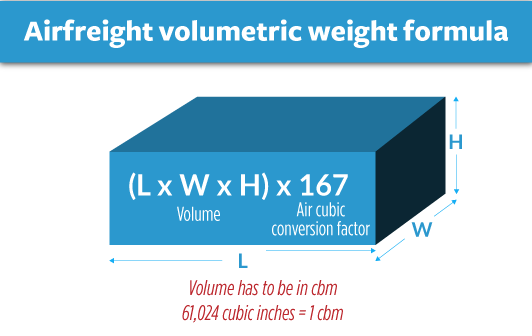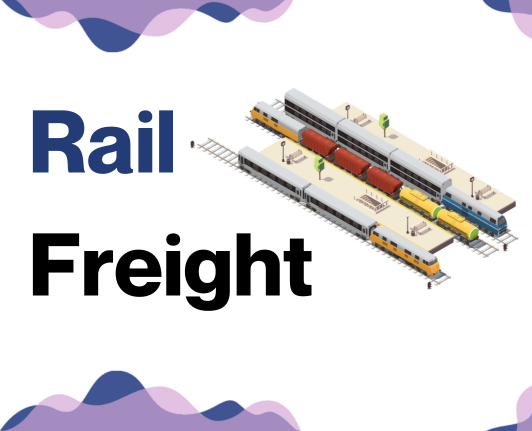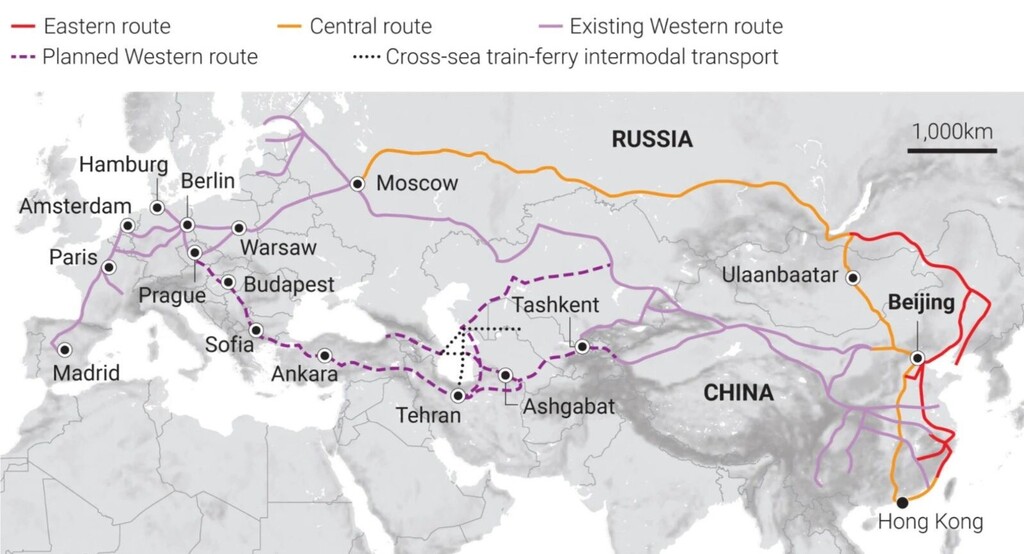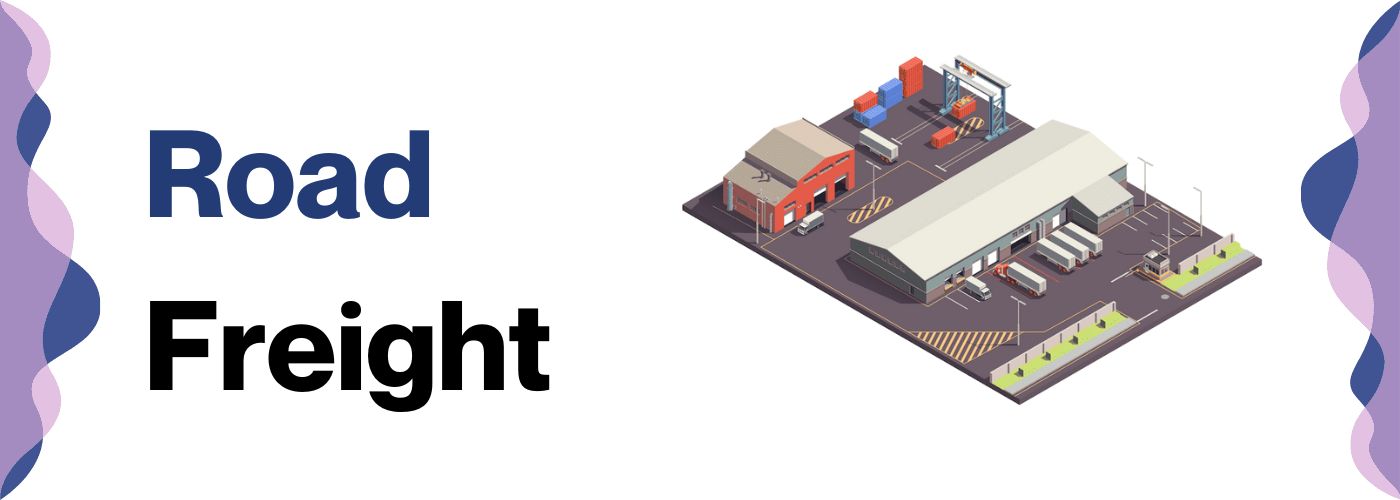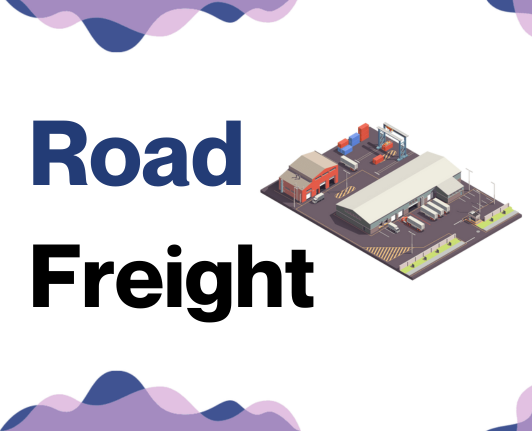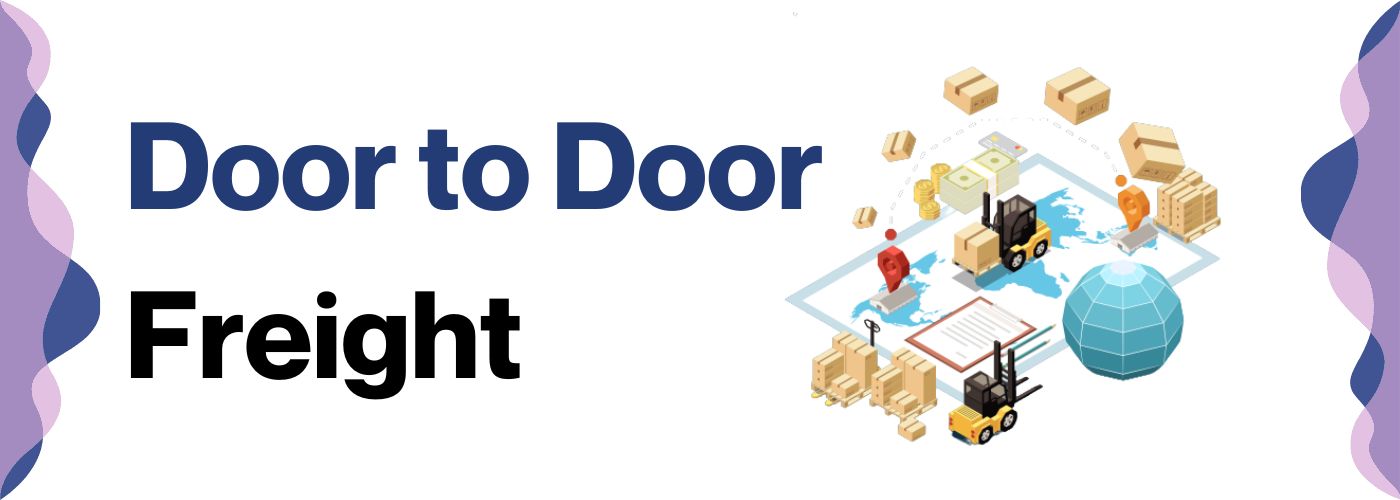Who knew that sending a crate from China to Sweden could feel as complex as mastering Scandinavian minimalist design? Yet here we are, buried in the fine print of freight rates, scratching our heads over transit times, and getting lost in the maze of customs regulations. But worry no more! This comprehensive guide is designed to demystify these dizzying aspects, and provide you with a clear roadmap detailing different freight options available, unraveling the enigma of customs clearance, duties, taxes and offering tailor-made advice for businesses just like yours. If the process still feels overwhelming, let DocShipper handle it for you! As your trusted international freight forwarder, we're committed to turning shipping challenges into success stories for businesses across the globe.
Which are the different modes of transportation between China and Sweden?
China and Sweden are far apart with many countries in between. Imagine a long car trip with countless roadblocks; you don't want that for your cargo. The most promising options? Sea and air freight. Airlines can get your goods from Beijing to Stockholm fast, like a cheetah chasing its prey. Moreover, ocean liners navigate vast seas consistently, much like reliable old tortoises. Both methods are like two sides of the same coin - one fast yet expensive, the other slower but economical. And remember, this isn't a one-size-fits-all approach; it all depends on your specific cargo and business needs.
How can DocShipper help?
Looking to ship goods from China to Sweden? At DocShipper, we make the process hassle-free. Our experts take the reins, managing everything from transport organization to customs clearance. Got a question or need an estimate? Reach out to our team and get a response within 24 hours. Let us simplify international shipping for you.
DocShipper Tip: Sea freight might be the best solution for you if:
- You are shipping large volumes or bulky items, as sea freight offers the most space at a cost-effective rate.
- Your cargo doesn't have an urgent deadline, as sea freight typically has longer transit times compared to air or rail.
- Your shipping routes are between major ports, allowing you to leverage the extensive global network of sea shipping lanes.
Sea freight between China and Sweden
China and Sweden's burgeoning trade relationship hinges significantly on ocean shipping, integrated through strategic cargo ports that knit an intricate transport network between their key industrial hubs. Sea freight sophistically services high-volume items and despite being slower, it is a cost-effective solution. However, the wiry whirls of international shipping, entwining intricate processes, pose a notable challenge to businesses. Missteps are not uncommon in handling comprehensive procedures, mounting to ill-timed delays and possibly financial losses.
Welcome to our 'Ocean shipping between China and Sweden' Guide. We'll sail with you across this vast sea of shipping norms, anchoring the best practices that can ease your sail. We hold the compass of specifications, carefully tailored to your business needs, and set the course for a smooth, hassle-free shipping experience. Stick around, as we drop valuable anchors on this informational journey. Prepare to master the art of error-free shipping between China and Sweden. We're in this together. Let's solve those difficulties, step by step.
Main shipping ports in China
Port of Shanghai:
Location and Volume: Nestled on the eastern coast of China in Shanghai, the Port of Shanghai, the globe's most bustling port, demonstrated exceptional performance in the initial four months of 2023. Handling a remarkable 15 million TEUs of container cargo, it recorded a significant 30.2% increase year-over-year, underscoring its pivotal role in global maritime trade. This growth, amidst China's post-COVID-19 economic recovery, showcases the nation's resilience and the port's unwavering commitment to sustaining international trade seamlessly.
Key Trading Partners and Strategic Importance: Main trading partners include countries like the United States, South Korea, Japan, and those in the European Union. Given its location, it's a significant transit point for goods moving inland to China.
Context for Businesses: If you're interested in reaching markets in Eastern China and beyond, the Port of Shanghai could be a focal point in your logistics due to its extensive capacity and well-established foreign trade links.
Ningbo-Zhoushan Port:
Location and Volume: Ningbo-Zhoushan Port, located in Zhejiang province, China, excelled in 2022, handling 33.35 million TEUs of container cargo, marking a 7.3% increase year-on-year and securing the third spot among the world's busiest container ports. Additionally, the port achieved a remarkable 1.25 billion tons of overall cargo throughput, maintaining its position as the world's top port for the 14th consecutive year. Notably, the port saw a significant growth of over 20% in its container sea-rail intermodal transport business, reaching a volume of 1.45 million TEUs. With an extensive network of over 300 shipping routes and the addition of 13 new international routes, including 120 "Belt and Road" lines, the port continues to enhance global connectivity. In 2022, the port implemented 18 steps to ensure smooth traffic and carried out 46 effective actions to advance progress and enhance operational efficiency.
Key Trading Partners and Strategic Importance: The port's strategic presence helps facilitate trade with Asian countries, Europe, and North America.
Context for Businesses: If increasing your reach in Central and North China ranks high on your agenda, Ningbo-Zhoushan Port's geographical benefits might bring high value to your logistics chain.
Port of Shenzhen:
Location and Volume: Shenzhen Port, located in the Guangdong-Hong Kong-Macao Greater Bay Area, achieved a historic milestone in 2022 by handling an impressive 30.0356 million TEUs, marking a 4.39% year-on-year increase. As the fourth port globally to exceed 30 million TEUs, Shenzhen's economic resilience and strategic efforts have fortified its position as a prominent shipping hub. The port's success can be attributed to the implementation of innovative strategies, including the establishment of transshipment routes, adoption of sea-rail transport, and the inauguration of international freight routes. With ongoing infrastructure expansions and strategic initiatives, Shenzhen Port aims to further enhance its throughput, targeting 33 million TEUs by 2025, solidifying its role as a vital player in global maritime trade.
Key Trading Partners and Strategic Importance: It focuses on trade with major global economies such as the EU, the USA and the Asian market, especially Japan, South Korea, and Southeast Asian countries.
Context for Businesses: If Southeast Asia's trade markets are your target or if you want to explore manufacturing markets in this region, the Port of Shenzhen is likely to be an integral part of your shipping strategy.
Port of Guangzhou:
Location and Volume:
Located at the heart of the Pearl River Delta, the Port of Guangzhou is the fifth busiest container port in the world, handling 24.6 million TEUs in 2022.The port is a major hub for trade between China and the rest of the world, and it plays a vital role in the global supply chain. The Port of Guangzhou is expected to continue to grow in the coming years, as China's economy continues to expand and global trade continues to recover.
Port of Hong Kong:
Location and Volume: Nestled at the mouth of the Pearl River Delta, Hong Kong Port boasts a thriving international container port, handling nearly 17 million TEUs in 2022. With over 240 international container liner services weekly, it connects to over 460 destinations globally. The major facilities, from container terminals to supporting amenities, are strategically located. In 2022, the Kwai Chung-Tsing Yi Container Terminals managed approximately 12.9 million TEUs, constituting around 77% of the port's container throughput, emphasizing its pivotal role in global maritime trade.
Key Trading Partners and Strategic Importance: The port maintains strong ties with countries like the USA, Europe, and major economies in Asia.
Context for Businesses: Consider the Port of Hong Kong if you aim to ship to Southeast Asia or need a transshipment hub linking Asia with the rest of the world.
Port of Qingdao:
Location and Volume: Qingdao Port, located in Shandong, witnessed remarkable growth in 2022. Handling 26.82 million TEUs of containers, it experienced a 13.1% increase year-on-year. The port's total cargo volume reached 627 million metric tons, marking a 10.3% rise. Leveraging its strategic location and advantageous reforms, Qingdao Port achieved a revenue of 19.26 billion yuan ($2.8 billion), showcasing a 14.71 percent year-on-year growth. This robust performance underscores its significance in both domestic and international maritime trade.
Key Trading Partners and Strategic Importance: Asia, Europe, and North America form the core trading partners, owing to its ideal position in Northeast Asia.
Context for Businesses: Looking to serve markets in North China or Japan and South Korea? The Port of Qingdao, due to its geographical location and substantial throughput, might be of significant importance to your logistics chain.
Key Trading Partners and Strategic Importance: The port serves a vast region, concentrating workings with partners in the USA, Europe, and the ASEAN countries.
Context for Businesses: If you're planning to penetrate the South Chinese market or ASEAN countries, the Port of Guangzhou, due its far-reaching network, could be of vital importance to your shipping logistics.
Main shipping ports in Sweden
Port of Gothenburg:
Location and Volume: The Port of Gothenburg, situated in Gothenburg, Sweden, efficiently handled 225,000 TEUs in the first quarter of 2023, marking a 6% increase from the same period last year. Serving as a pivotal trade hub between Sweden and the global market, the port plays a vital role in the Swedish economy.
With the ongoing expansion of Sweden's economy and the recovery of global trade, the Port of Gothenburg is poised for continued growth in the coming years. Additionally, the port is actively investing in various initiatives to reduce its environmental impact while developing innovative services and facilities tailored to meet the evolving needs of its customers.
Key Trading Partners and Strategic Importance: It has a strategic relationship with numerous global regions, significantly Asia, Europe, and North America, owing to its well-established trade routes.
Context for Businesses: If boosting your market presence in these regions forms a significant part of your growth strategy, the efficient handling and short lead time of the Port of Gothenburg could provide a noteworthy advantage for your shipping operations.
Port of Stockholm:
Location and Volume: The Port of Stockholm, situated in Stockholm, Sweden, efficiently handled 27,840 TEUs in 2023. Operated by Hutchison Ports, the world's leading port network, the port boasts a robust container terminal. Its strategic significance is further emphasized by its excellent connectivity to major rail and road networks, making it a pivotal location for seamless goods transportation.
Key Trading Partners and Strategic Importance: The port maintains important trade links primarily with other European countries and is known for its exceptional passenger port facilities.
Context for Businesses: For businesses aiming to penetrate European markets with diversified shipping needs, the versatility and state-of-the-art facilities at the Port of Stockholm add significant value to your shipping strategy.
Port of Helsingborg:
Location and Volume: In Helsingborg, Sweden, the Port of Helsingborg achieved record-breaking volumes in 2021, handling 8.2 million tons of cargo, including a 1,000 TEU increase in container volumes compared to 2019. Despite challenges like container shortages, the port's customer-centric approach and strategic investments led to a 4% volume rise. The port's robust operation and proactive planning ensure uninterrupted goods flow, with no signs of decreasing volumes or shipping prices ahead.
Key Trading Partners and Strategic Importance: The port deals primarily with traffic from the North and Baltic Sea region and it has a significant role in facilitating trade within these regions.
Context for Businesses: If your logistics strategy involves heavy cargo traffic in the Baltic region, considering the Port of Helsingborg could streamline and optimize your operations.
Port of Malmo:
Location and Volume: The Port of Malmö in Sweden is a bustling maritime hub with a substantial capacity, handling a multitude of TEUs annually. In the year 2022, the port efficiently managed an impressive volume of over 1.5 million TEUs, showcasing its vital role in the region's trade and its significant contribution to the area's economic prosperity. With state-of-the-art facilities and a strategic location, the Port of Malmö continues to be a cornerstone of international trade, facilitating seamless import and export activities. Its consistent handling of such vast container volumes reaffirms its reputation as a reliable and efficient gateway for global commerce, fostering economic growth and strengthening international partnerships.
Key Trading Partners and Strategic Importance: Malmö has an exceptional trade relationship with other countries in the Baltic Sea region, and it holds a strategic position being right next to Denmark.
Context for Businesses: If you're operating ro-ro ships and have a primary market in the Baltic region, or looking at increasing your footprint in Denmark, then the Port of Malmö is a strategic choice worth considering.
Port of Norrkoping:
Location and Volume: Nestled on the eastern coast, the Port of Norrkoping is a medium-sized port, known for handling a diverse range of cargo. The Port of Norrköping stands as a key player in the nation's maritime landscape, boasting a robust capacity to handle a substantial volume of TEUs each year. In 2022, the port successfully managed an impressive 50,000 TEUs, serving as a vital gateway for trade, facilitating the smooth flow of goods, and contributing significantly to the local and regional economy.
Key Trading Partners and Strategic Importance: Norrkoping predominantly facilitates domestic trade and serves as a crucial point for biomass products export.
Context for Businesses: If your primary products involve biomass or other diverse goods and you're seeking expansion within domestic markets or few specific international markets, Norrkoping can be a vital cog in your logistics strategy.
Port of Luleå:
Location and Volume: At the mouth of the Lule River in Northern Sweden, the Port of Luleå is particularly significant for its ability to handle heavy loads, often utilizing the Bothnian railway. It stands as a robust maritime gateway, adept at handling substantial volumes of TEUs each year. In 2022, the port proudly handled over 800,000 TEUs, showcasing its efficient operations and strategic location. This makes it a cornerstone of regional trade, facilitating the smooth movement of goods and bolstering the area's economic landscape.
Key Trading Partners and Strategic Importance: The port serves as a key logistics hub for Northern Europe, handling traffic from the neighboring Nordic and Baltic regions.
Context for Businesses: If you are looking at outreach to the Nordic and Baltic region, particularly for heavy loads, the Port of Luleå could serve as a foundational part of your shipping route.
Should I choose FCL or LCL when shipping between China and Sweden?
Choosing whether to ship by consolidation or use a full container between China and Sweden is more than a toss-up. It's a strategic move that can significantly shape the cost, timeline, and success of your shipping process. In this section, we'll unpack the key differences between Full Container Load (FCL) and Less than Container Load (LCL), commonly known as consolidation. Understanding these nuances can be the difference between a seamless journey or a logistical nightmare. So, let's dive in and find the best fit for your unique shipping needs.
LCL: Less than Container Load
Definition: Less-than-container load (LCL) shipping refers to a transportation method where the shipment does not fill a standard container. Many businesses consolidate their goods with others to make up a full container between the origin and destination points.
When to Use: If your cargo is less than 13/14/15 CBM, LCL shipment could be the most sensible choice. It allows for increased flexibility, particularly for low-volume shippers, by enabling them to pay only for the space they use, thereby reducing excess spending.
Example: Consider an e-commerce business in Sweden sourcing unique handicrafts from China. They may have monthly orders of 10 CBM. Shipping these via LCL would be cost-effective, as they'd only pay for their portion of space in the container, instead of paying for a whole container that isn't filled to capacity.
Cost Implications: In terms of cost, LCL shipping can be less expensive for smaller volumes, as charges are based on the volume or weight of your goods, not a whole container. However, while the initial LCL freight quote might be lower compared to FCL (Full Container Load), remember that there may be additional handling fees involved in the consolidation/deconsolidation process.
FCL: Full Container Load
Definition: FCL, or Full Container Load, is a type of ocean freight shipping which refers to an exclusive, dedicated container shipment - be it a 20'ft or 40'ft container.
When to Use: Consider FCL shipping when your cargo volume is over 13-15 CBM. This is because of two key reasons: cost-efficiency for bulk orders and security. Once sealed, the FCL container remains untouched until it reaches the destination, hence reducing potential damage or lost items.
Example: Suppose you're a furniture exporter shipping a large consignment of chairs from Shanghai to Stockholm. Your shipment already occupies more than 15 CBM, filling up majority of a 20'ft container. Opting for an FCL shipment can be more cost-effective compared to LCL.
Cost Implications: For cost implications, it's crucial to start with an FCL shipping quote. The quote usually includes loading, freight, and unloading costs. However, unlike LCL, you have a fixed rate for the entire container, which can be comparatively cheaper for large volumes. Just remember, the cost-effectiveness of FCL arises when the cubic meter volume of your cargo surpasses the LCL vs FCL break point.
Unlock hassle-free shipping
Experience a new level of stress-free cargo shipping with DocShipper. Our skilled ocean freight experts assess your business needs and evaluate critical factors like shipment size, cost, and deadlines to recommend either consolidation or full container shipping from China to Sweden. Make an informed decision with our guidance to maximize efficiency. Ready to ease your shipping process? Contact us now for a free estimate.
How long does sea freight take between China and Sweden?
On average, sea freight shipping between China and Sweden takes approximately 38-40 days. This timeline, however, is influenced by several factors such as the specific ports of origin and destination, weight, and the nature of the goods being transported. For a more precise estimate, tailored to your unique shipping needs, it would be wise to contact an experienced freight forwarder like DocShipper.
Transit Time Estimates (in days):
| Chinese Port | Swedish Port | Average Transit Time |
| Shanghai | Gothenburg | 35 |
| Shenzhen | Helsingborg | 37 |
| Qingdao | Stockholm | 40 |
| Ningbo | Norrköping | 42 |
*Please note that these are average transit times and variations may occur due to external circumstances or shipping specifics.
How much does it cost to ship a container between China and Sweden?
Shipping a container from China to Sweden? The cost per CBM can vary widely, making an off-the-cuff price a tricky thing. Factors including Point of Loading, Point of Destination, carrier used, nature of goods, and even monthly market fluctuations all play a role. It's safe to say that ocean freight rates aren't a one-size-fits-all affair, and can feel a bit like a moving target. But fret not, our shipping specialists understand these dynamics, working tirelessly to provide the best shipping cost tailored to your unique needs. It's why we quote on a case-by-case basis - to ensure you get the most value for your money. So, let's talk today for your bespoke shipping solution.
Special transportation services
Out of Gauge (OOG) Container
Definition: OOG container shipping refers to the transport of items that are larger than standard container dimensions. These shipping containers have openings at the top or the side to accommodate out of gauge cargo.
Suitable for: It's most suitable for oversized cargo that does not fit into standard sized containers.
Examples: Industrial equipment, construction materials, or large machinery.
Why it might be the best choice for you: If you're dealing with cargo that doesn't adhere to the standard container dimensions, then an OOG container is a practical and safe solution for shipping from China to Sweden.
Break Bulk
Definition: Break bulk involves the shipping of goods that are packaged separately, typically on pallets, in drums, bags, or boxes. This loose cargo load is individually loaded onto the shipping vessel.
Suitable for: Ideal for individual items that are either too large or heavy to be loaded into standard containers.
Examples: Machinery parts, raw materials, construction equipment.
Why it might be the best choice for you: Break bulk shipping allows for greater flexibility with cargo sizes and types, especially if you have goods of varied dimensions to ship.
Dry Bulk
Definition: Dry bulk shipping refers to the shipment of raw material in large quantities which are unpackaged and are shipped in its raw form.
Suitable for: Raw materials like coal, cement, grains, or other commodities.
Examples: Sand, steel, fertilizers, or plastic granules.
Why it might be the best choice for you: If you're in the business of moving lots of raw materials from China to Sweden, dry bulk shipping makes the most logistical sense.
Roll-on/Roll-off (Ro-Ro)
Definition: Ro-Ro vessels are ferries that are designed to carry wheeled cargo like cars, trucks, and trailers that are driven on and off the ship on their own wheels or using a ro-ro platform.
Suitable for: Wheeled cargo and heavy machinery.
Examples: Cars, buses, trucks, agricultural machinery, or construction vehicles.
Why it might be the best choice for you: If your business involves moving vehicles or large wheeled machinery from China to Sweden, choosing a ro-ro vessel will ensure a smoother and safer journey for your goods.
Reefer Containers
Definition: Reefer containers, or refrigerated containers, are a type of shipping container used to transport temperature-sensitive cargo.
Suitable for: Perishable goods that need a controlled temperature, like food and pharmaceuticals.
Examples: Fruits, meat, seafood, or medicine.
Why it might be the best choice for you: If your business handles products that need to be kept at specific temperatures during transport, reefer containers are an ideal solution to guarantee the quality of your goods from China to Sweden.
Remember that these shipping methods have different costs and timeframes, so the best option for your business will depend on your specific needs, budget, and schedule. Feel free to reach out to DocShipper for a free shipping quote in less than 24h. We're here to guide you in choosing the most efficient and cost-effective shipping method for your goods.
DocShipper Tip: Air freight might be the best solution for you if:
- You are in a hurry or have a strict deadline requirement, as air freight offers the fastest transit times.
- Your cargo is less than 2 CBM (Cubic Meter), making it more suitable for smaller shipments.
- Your shipment needs to reach a destination that is not easily accessible by sea or rail, allowing you to tap into the extensive network of global airports.
Air freight between China and Sweden
For businesses in need of fast and reliable shipping from China to Sweden, air freight becomes the knight in shining armor. It strikes a balance in dispatching small, high-value goods like electronics and medicinal products, serving as the quickest cross-continent bridge. However, the hidden devil lies in the details. Often, the true cost of air carriage is underestimated. Guesswork in weight calculations and blind spots in shipping practices can have you paying a king's ransom. To dodge such blunders, we dive headlong into the nitty-gritty of these common pitfalls, empowering you to save big on your next shipment.
Air Cargo vs Express Air Freight: How should I ship?
Are you pondering how best to ship your goods between China and Sweden, weighing air cargo against express air freight? It's like choosing between hitching a ride in an already moving airline or booking your goods a private jet for a faster trip. Understanding the nuances between these two can help chart the optimal route for your business. Let's dive in!
Should I choose Air Cargo between China and Sweden?
Choosing air cargo for your freight between China and Sweden can be both cost-effective and reliable. For instance, airlines like China Southern Airlines and SAS Scandinavian Airlines offer regular cargo services, providing dependable transit schedules. However, note that these schedules may extend the overall transit times. As your cargo exceeds 100/150 kg (220/330 lbs), air freight becomes a more attractive option due to economies of scale. So, if your budget can accommodate this, air cargo is a compelling choice for your shipping needs.
Should I choose Express Air Freight between China and Sweden?
Express air freight is a transport service utilizing exclusive cargo aircraft, sparing you passenger flight-related restrictions. This option, provided by renowned carriers like FedEx, UPS, and DHL, benefits shipments less than 1 CBM or under 100/150kg (220/330 lbs). Offering speed and flexibility, it's ideal if you're moving smaller, high-value items between China and Sweden. Less handling also reduces the chances of damage. So, if quick delivery and safety are high on your priority list, this mode of transportation might be your best choice.
Main international airports in China
Beijing Capital International Airport:
Cargo Volume: 2.1 million metric tons (2019)
Key Trading Partners: USA, Australia, Japan, and South Korea
Strategic Importance: As China's busiest airport, it offers a multitude of global connections and is centrally located for domestic distribution.
Notable Features: Includes state-of-the-art cargo handling facilities and extensive cold chain solutions.
For Your Business: If your business deals in perishable goods, Beijing's extensive cold chain solutions could help maintain the quality and safety of your products.
Shanghai Pudong International Airport:
Cargo Volume: 3.6 million metric tons (2019)
Key Trading Partners: USA, Europe, Australia, and South Asia
Strategic Importance: Situated in the thriving business hub of Shanghai, it's a key gateway for trade with Asia and beyond.
Notable Features: Offers dedicated express delivery terminals and a bonded zone.
For Your Business: The bonded zone can allow your business to defer duties and taxes until your goods are moved out, giving you greater financial flexibility.
Guangzhou Baiyun International Airport:
Cargo Volume: 1.8 million metric tons (2019)
Key Trading Partners: Southeast Asia, Middle East, USA, and Australia
Strategic Importance: Located in South China's biggest city, it's a major hub for the region's booming e-commerce sector.
Notable Features: Features an integrated logistics center and express delivery services.
For Your Business: If your business is focused on e-commerce or just-in-time deliveries, Guangzhou's express delivery infrastructure provides quick turnaround times that cater to your needs.
Chengdu Shuangliu International Airport:
Cargo Volume: 0.5 million metric tons (2019)
Key Trading Partners: Europe, USA, and Southeast Asia
Strategic Importance: Serves as the center of logistics operations in Western China.
Notable Features: Houses a newly built cargo area with expanded handling facilities.
For Your Business: Its accessible location in Western China can be highly valuable if your business targets markets or has suppliers in this region.
Shenzhen Bao’an International Airport:
Cargo Volume: 1.2 million metric tons (2019)
Key Trading Partners: Southeast Asia, Europe, and USA
Strategic Importance: A critical hub in South China’s Pearl River Delta area, close proximity to Hong Kong.
Notable Features: Includes express cargo terminals and extensive freighter routes.
For Your Business: Given its prime location, this airport is great for businesses that need to quickly move goods to and from the manufacturing hubs in the Pearl River Delta and Hong Kong.
Main international airports in Sweden
Stockholm Arlanda Airport:
Cargo Volume: Over 180,000 tons of cargo are transported here annually, making it the busiest airport in terms of cargo in Sweden.
Key Trading Partners: The major trading partners include the United States, Germany, Norway, and China.
Strategic Importance: Situated in the heart of Scandinavia, Stockholm Arlanda is Sweden's gateway to international trade.
Notable Features: This airport is equipped with advanced freight handling facilities and offers express cargo options.
For Your Business: With its extensive connectivity and modern infrastructure, Stockholm Arlanda Airport can ensure timely and efficient delivery of your goods to various global destinations.
Gothenburg Landvetter Airport:
Cargo Volume: More than 60,000 tons of cargo are transported annually.
Key Trading Partners: Includes China, the USA, and European countries such as Germany and Norway.
Strategic Importance: As the second-largest airport in Sweden, it plays a crucial role in serving the western part of the country.
Notable Features: It provides specialized facilities for pharmaceutical freight, which ensures the safe transportation of sensitive goods.
For Your Business: If you deal in pharmaceuticals or other sensitive materials, Gothenburg Landvetter's specialized services can provide the care that your cargo needs, helping to maintain product quality and integrity.
Malmö Airport:
Cargo Volume: Handles around 6,000 tons of cargo annually.
Key Trading Partners: Primarily caters to trade with European countries including Germany, Poland, and the UK.
Strategic Importance: Proximity to the booming Öresund region and greater connectivity through the Öresund Bridge to Denmark and Continental Europe.
Notable Features: Provides extensive cargo handling services, including heavy and unusual size freight.
For Your Business: If you trade largely with European markets and occasionally handle heavy or unusual freight, consider Malmö Airport for its connectivity and cargo handling capabilities.
Jönköping Airport:
Cargo Volume: Handles approximately 20,000 tons of cargo each year.
Key Trading Partners: Primarily trades with Nordic countries, as well as key European markets.
Strategic Importance: Positioned in the middle of southern Sweden, it’s an important cargo hub for the region.
Notable Features: Specializing in e-commerce cargo, it's considered a hub for digital trade.
For Your Business: For businesses involved in e-commerce and looking for good Nordic and European connectivity, Jönköping should definitely be on your list.
Umeå Airport:
Cargo Volume: Manages over 1,500 tons of cargo each year.
Key Trading Partners: Trades largely with Nordic countries.
Strategic Importance: Located in northeastern Sweden, it’s vital for businesses in the region seeking international exposure for their goods.
Notable Features: Despite being smaller in scale, it provides excellent services for cargo transport where customer service is a high priority.
For Your Business: If your business sends lower volumes of high-value goods, Umeå’s commitment to excellent customer service and focus on careful handling can provide added reassurance.
How long does air freight take between China and Sweden?
On average, air freight shipping between China and Sweden can take approximately 3 to 5 days. However, it's crucial to underline that transit times may vary depending on the specific departure and arrival airports, the weight and the nature of your goods. For accurate and precise transit times tailored to your shipping needs, your best bet would be to consult with a specialized freight forwarder, such as DocShipper.
How much does it cost to ship a parcel between China and Sweden with air freight?
Estimating an air freight cost between China and Sweden is multifaceted, commonly ranging around $5-$10 per kg. However, costs fluctuate widely due to factors such as distance from departure and arrival airports, parcel dimensions, weight, and commodity nature. As every shipment holds unique requirements, our team tailors quotes to your exact needs, ensuring the best rates. We're committed to transparency and efficiency, customizing our solutions to fit your budget and timeline. Reach out and receive a free, no-obligation quote within 24 hours.
What is the difference between volumetric and gross weight?
Gross weight is the actual weight of your shipment, including the goods and packaging. Volumetric weight, on the other hand, is a calculation that reflects the volume a shipment takes up during transport.
Gross weight is straightforward to calculate - you simply weigh your shipment in kilograms (kg). For example, your shipment may weigh 200 kg, or about 440 lbs.
Volumetric weight, in air freight shipping, is a bit more complicated. Measurement units are in centimeters (cm). You calculate it by multiplying the length, width, and height of each package in the shipment, adding these together if there are multiple packages, and then dividing by 6,000 for Air cargo, and by 5,000 for Express Air Freight services.
For instance, let's take a package that's 125 cm long, 80 cm wide, and 65 cm high. To work it out for Air cargo, we do (1258065)/6,000, which gives us a volumetric weight of about 110 kg, or around 243 lbs. The same package measured for Express Air Freight would be (1258065)/5,000, resulting in roughly 132 kg, or around 291 lbs.
Understanding these measurements and calculations is crucial because freight charges are determined based on the higher of the two weights - gross or volumetric. This means a lightweight, bulky shipment could cost more than a small, heavy one! Remember, in the world of shipping, space is just as important as weight.
DocShipper tip: Rail freight might be the best solution for you if:
- You are looking for a cost-effective transportation method for large volumes.
- Your shipping route is well-connected by rail, providing a reliable and environmentally friendly option.
- Your cargo's destination and origin are near rail terminals, minimizing the need for additional road transportation.
Rail freight between China and Sweden
Who needs flying carpets when we have the Trans-Eurasian Railway? Gliding from China to Sweden, this rail freight connection, established firmly in 2017, has been a game-changer, bolstering trade and economic symbiosis between the two nations.
It traverses countries like Russia, Kazakhstan, and Belarus, serving as a conduit for goods ranging from electronics to heavy machinery. Although slower than air freight but cost-effective, it’s indeed the tortoise in our transportation fable; steadily carrying the weight of economic progress.
But, let’s not overlook the customs blues! Document-dodging and regulatory hurdles along this route chew up a fair bit of transit times. Yet, the song remains the same – preparation and expertise can score your smooth passage!
Figuring out whether this suits your shipping needs? Well, that's an exciting journey in itself, and we're here to help you navigate your way through it!
What are the main train stations between China and Sweden?
China
Shanghai Railway Station:
Serving one of the world's busiest ports, Shanghai Railway Station is crucial for businesses importing or exporting goods via rail in China. It handles a significant volume of cargo, linking key trading partners like Japan, South Korea, and the United States. Strategically, its location in Shanghai offers easy access to inland provinces and major cities due to other rail networks. For your business, the station’s comprehensive logistics facilities streamline cargo movement and customs clearance.
Beijing West Railway Station:
Beijing West is another primary station for rail freight transportation. It connects China's capital with Europe through the trans-Mongolian and trans-Siberian route, making it a significant hub for east-west trade. The station accommodates high cargo volume from trade partners in Russia, Germany, and beyond. The station may play a key role in your shipping strategy if you seek broader market access in Europe.
Shenzhen North Railway Station:
Situated next to the economic powerhouse Hong Kong, Shenzhen North handles an impressive volume of cargo across a wide range of industries. This station is highly beneficial for businesses linked to South-East Asia and Pacific countries, offering swift and efficient freight services. Easily integrable into your holistic shipping strategy, this station also provides comprehensive logistics solutions.
Zhengzhou Railway Station:
One of the main nodes on the new Eurasian Land Bridge, Zhengzhou offers direct rail freight services to many European countries like Germany, Sweden, and the Netherlands. The station enables smooth shipping and timely delivery of goods due to its streamlined customs procedures. If your business requires efficient cross-border shipping with Europe, Zhengzhou could be an ideal choice.
Sweden
Malmö Central Station:
As Sweden's third-largest cargo station, Malmö Central serves as a bridge to Denmark and broader Europe. It plays a role in the Nordic Triangle rail network, a strategic freight corridor. If your business strategy emphasizes connectivity to various parts of Europe, Malmö Central is an advantageous node to consider.
Gothenburg Central Station:
It is a significant hub for the Scandinavian countries, linked directly with Denmark and Norway. If your business trades predominantly with the Nordics, Gothenburg Central is potentially the most suitable due to its well-connected rail lines and substantial cargo volume.
Helsingborg Central Station:
Helsingborg is strategically situated near Sweden's busy sea port, providing excellent sea-rail intermodality. Particularly relevant for businesses that require short sea shipping along with rail freight, this station could integrate well into your European shipping routes.
Norrköping Central Station:
Norrköping, part of the EU's strategic TEN-T network, is a crucial node for rail freight transport. It can streamline your goods' transport from Sweden to Central Europe with consistent road and rail connectivity. If your business largely serves Central Europe, this station's strategic location and connections can optimally suit your needs.
How long does rail freight take between China and Sweden?
Determining the exact transit time from China to Sweden via rail freight usually depends on various factors like the cargo's origin city and destination city, customs clearance speed, and the specific rail route used. On average, it takes around 12-18 days. Below you will find a list of common rail networks connecting China and Europe, including approximate transit times and frequency of departures. Kindly note these timings serve as general estimates, transit times can vary due to the unpredictable nature of rail freight logistics.
- Zhengzhou to Hamburg (Germany): ~ 15-17 days, Departs Daily
- Zhengzhou to Munich (Germany): ~ 17-18 days, Departs Monday and Friday
- Zhengzhou to Liege (Belgium)/Milan (Italy): ~ 20 days, Departs Monday, Thursday and Friday
- Chongqing to Duisburg (Germany): ~ 16-17 days, Departs Monday/Friday
- Yiwu to Hamburg (Germany): ~ 16-18 days, Departs Monday/Thursday/Friday
- Yiwu to Duisburg (Germany): ~ 16-18 days, Departs Monday/Thursday/Friday
- Yiwu to Madrid (Spain): ~ 20 days, Departs Monday/Thursday/Friday
- Wuhan to Hamburg (Germany): ~ 17-19 days, Departs Saturday/Wednesday/Thursday
- Wuhan to Duisburg (Germany): ~ 17-19 days, Departs Saturday/Wednesday/Thursday
- Chengdu to Tilburg (Netherlands): ~ 18 days, Departs Wednesday/Sundayy
- Suzhou to Hamburg (Germany): ~ 18-20 days, Departs Sunday
- Suzhou to Duisburg (Germany): ~ 18-20 days, Departs Sunday
- Xi'an to Duisburg (Germany): ~ 18-20 days, Departs Wednesday/Thursday/Friday/Saturday
What are the advantages of rail transport between China and Sweden
Opting for rail transport when shipping goods from China to Sweden provides a balance of cost and time efficiency. It bridges the gap between sea freight's slower pace and air freight's high expenses, making it particularly attractive for businesses on a budget, yet needing some speed. Rail, in fact, can cut the transit time by half compared to sea options, which typically take around 35-40 days. As an example, a shipment from Beijing to Stockholm can be on your doorstep in just around 18-20 days. Moreover, rail freight's emissions are considerably lower than air freight, making it a greener choice. The combination of these advantages allows businesses to maintain their competitive edge without sacrificing budget, time, or environmental responsibility.
How much does shipping goods by train between China and Sweden cost?
Pinning down a one-size-fits-all price for rail freight shipping from China to Sweden is like trying to catch a fish with your bare hands - almost impossible. Why? Every shipment is unique. The cost depends on several variables like weight, dimensions, commodity type, and so forth. That's why we prefer to give individual, tailored quotes. We don't believe in guesswork. We believe in giving you the most bang for your buck, exploring all options to get the best rates. Scared of hidden costs? Not on our watch. We run a tight ship here (excuse the pun), leaving no stone unturned. Need a quote? Shoot us a request. We'll get it back to you in less than 24 hours. Free of charge. Now how's that for service?
DocShipper tip: Road freight might be the best solution for you if:
- You're looking for a cost-effective option for shorter routes. For relatively short distances, road freight can be more economical than air freight and faster than sea or rail.
- Your destination is within the same continent or a neighboring country. Road freight is often the most straightforward and quickest option for cross-border freight and shorter distances.
- Your shipment is of irregular size or shape. Trucks offer flexibility in terms of cargo types and sizes, making it easier to transport goods that might not fit into standard sea containers or air cargo spaces.
Trucking between China and Sweden
Contemplating shipping goods from China to Sweden? Let's dive right into a truly viable option - trucking services. With versatile routes, reasonable transport times, and often more cost-effective compared to air or rail freight, it's an option worth your consideration. Think sweeping highways, stringent road conditions maintained for smooth transit, and potential for lowered costs. Of course, like all methods, road freight carries its own set of challenges, like weather dependency and possible transit delays. Yet, its ability to deliver directly to your warehouse and relative affordability can provide a high-value solution for your shipping needs. Intrigued yet? Let's explore further!
What if I can’t fill a truck between China and Sweden?
Choosing the right type of freight, either Less-than-Load (LTL) or Full Truckload (FTL), can be a game-changer when shipping goods between China and Sweden. Discover how these options offer flexible and cost-effective solutions tailored to your business's specific needs in our upcoming section.
LTL: Less than Truck Load
Less Than Truck Load, or LTL freight, is your best bet if your cargo doesn't fill the whole container, especially when it measures below 13/14/15 Cubic Meters (CBM). Let's illustrate this point with an example - suppose you're a furniture retailer importing chic armchairs from China, and each shipment only occupies around 10 CBM. Opting for LTL saves both your money and resources, as you only need to pay for the space your product consumes in the freight instead of the entire truckload.
Consider using LTL freight in the following situations:
- You're dealing with non-time-sensitive deliveries, as LTL shipping can take a little longer.
- The goods aren't prone to damage during frequent loading and unloading.
- Your cargo is less than half of the full truckload capacity (about 13/14/15 CBM).
- Frequent shipments are needed because your inventory levels are low.
So, your LTL shipment is destined to be a smart choice due to its economical and practical approach to cargo transportation between China and Sweden.
FTL: Full Truck Load
Full Truck Load shipping, or FTL freight, is the go-to choice when you have a substantial amount of goods to transport, typically over 13-14-15 cubic meters (CBM). Picture this: you're shipping a large, bulky order, and it essentially fills a whole truck. That's when you'd go for FTL, because you're utilizing the full space – no room left for sharing.
Sounds familiar? Perhaps you've exported those teak chairs from China to Sweden, taking up about 15 CBM. Choosing an FTL shipment ensured all those chairs moved together, safely and swiftly to their destination.
Wondering when else you might use FTL? Here are some handy pointers:
- When peace of mind is key: Your whole shipment stays together, reducing chances of mispicks or lost goods.
- For expedited shipping: FTL usually means faster delivery times compared to shared truck options.
- When handling delicate items: Less handling of your goods can minimize potential damage.
- If special requirements are in play: Maybe you need temperature control or have outsized items, FTL can cater to these needs.
Remember, the goal of choosing FTL is to make your shipping journey as seamless as possible.
What are the main routes between China and Sweden?
Traveling around 7,500 kilometers through a combination of domestic and international highways, the route typically begins in Beijing and ends in Stockholm. It's a straight course crossing the heart of China through major cities like Urumqi, before entering Kazakhstan and Russia. From Moscow, the journey veers north all the way through the Baltic states of Latvia and Lithuania, navigating meticulously through Poland, Germany, and Denmark. Two key factors can affect these routes: grueling winters often resulting in road closures and increased congestion during holidays and peak trade periods. Plan your road freight accordingly to avoid delays.
What are the road transit times between China and Sweden?
The average road transport time from China to Sweden typically ranges from 15 to 25 days. However, predicting exact delivery times can be challenging due to fluctuations in traffic, differing circulation policies across countries, and occasional poor road quality, such as what you might encounter in areas of Eastern Europe. Although these are rough estimates, your business can reach out to us any time to receive a precise cross-border freight quote within 24 hours.
How much does trucking cost between China and Sweden?
Navigating the price landscape for trucking goods from China to Sweden can feel like deciphering a noodle soup recipe. Fear not! An exact number is tough to pin down with costs varying like Beijing's weather. But hey, don't sweat about it. Each business has unique needs, and that's why we tailor quotes to suit your specific situation. Trust us, we'll roll up our sleeves to secure you the best rates. No stress, just success!
DocShipper tip: Door to Door might be the best solution for you if:
- You value convenience and want a seamless shipping process, as door-to-door takes care of every step from pickup to delivery.
- You prefer a single point of contact, as door-to-door services typically provide a dedicated agent to handle all aspects of the shipment.
- You want to minimize the handling of your goods, reducing the risk of damage or loss, as door-to-door minimizes transitions between different modes of transport.
Door to door between China and Sweden
Unpacking the nitty-gritty of international Door to Door shipping, it's a premium service offering total convenience by handling your goods right from the sender's doorstep in China to the recipient's doorstep in Sweden. This fantastic choice provides a seamless, stress-free shipping experience saving huge on time and effort. So, ready to get into the fast lane with Door to Door shipping? Let's dive in!
Overview – Door to Door
Shipping between China and Sweden can be a complex process. The bustling ports, tedious customs paperwork, and tricky transportation can make the journey feel like a labyrinth. But there's an easier way—door to door shipping. This all-inclusive, stress-free service takes care of everything, bridging the gap between the producer and consumer. Don't worry about the cons; they're dwarfed by the sheer convenience offered. Thousands of DocShipper's clients have made it their go-to logistics solution. However, it's always essential to understand every aspect of your shipping journey to make the best call for your business.
Why should I use a Door to Door service between China and Sweden?
Ever heard the saying, 'don't sweat the small stuff'? With Door to Door service between China and Sweden, you can forget about the small and big logistic stuff alike! There's a bunch of reasons why this service is the magic key to your shipping hassles:
- Zero Stress Logistics: Right from goods pickup at the warehouse in China to delivery at your doorstep in Sweden, every inch of the journey is taken care of - paperwork, customs, you name it.
- Timely Delivery: Running against time with your urgent shipments? Leave your worries at the door. This service prioritizes respecting deadlines, perfect for your quotidian and urgent shipments.
- Special Care: Complex cargo can feel like a rebellious teenager - hard to handle. The Door to Door service specialists will ensure your goods arrive intact and on-time, with the TLC they require.
- Trucking Till The Final Destination: Packing and loading your own trucks is a chore - and sometimes a backache. This service eliminates that step, ensuring smooth trucking until the end of your goods' journey.
- Convenience, Convenience, Convenience: And did we mention convenience? Who wouldn't want a service that saves time and tedium, offering a hassle-free shipping experience?
So why fret over the details when you can sip your coffee, relax, and let the Door to Door service handle your shipping? You'll wonder how you ever lived without it!
DocShipper – Door to Door specialist between China and Sweden
DocShipper offers comprehensive, hassle-free shipping solutions from China to Sweden. We expertly manage every step - from packing to transport and customs - using any shipping method that suits your needs. A dedicated Account Executive is at your disposal to ensure a smooth and efficient process. Within 24 hours, we can provide you with a no-obligation, cost-free estimate. Need immediate assistance? Our consultants are just a phone call away and ready to offer complimentary advice. Your stress-free shipping journey starts with DocShipper.
Customs clearance in Sweden for goods imported from China
Customs clearance, the crucial stage of importing goods from China to Sweden, can be notoriously complex. Unexpected fees could sneak up on you, and your goods might face prolonged hold-ups at customs. It hinges on your understanding of customs duties, taxes, quotas, and licenses — minor missteps could result in your goods being detained. Don't fear, though, as subsequent sections of this guide will unveil the nuances of these processes. Also, good news! At DocShipper, we lend you total support for any type of goods, anywhere on the globe. To get started with your project, reach out to our team with details about your goods' origin, their value, and the HS Code. These details are crucial for accurate budget estimation. Rest easy, knowing you're in expert hands.
How to calculate duties & taxes when importing from China to Sweden?
Navigating the maze of import duties and taxes can feel like a daunting task, but with a solid understanding of the key elements needed for calculation, it can be simplified considerably. Here's a brief lowdown: the customs duties are determined based on the country of origin, Harmonized System (HS) Code of the product, the customs value, and the applicable tariff rate. Besides, be aware that additional taxes and fees may apply, depending on the product and import regulations.
Ready to get started with your import journey from China to Sweden? Begin by pinpointing the country where your goods are manufactured or produced. This initial step lays the foundation for the rest of the process and sets the stage for efficient shipping operations.
Step 1 - Identify the Country of Origin
Knowing your goods' origin country is more than just a basic detail - it's a crucial stepping stone in estimating import duties and taxes. First off, it determines the specific trade agreements in effect. For instance, China and Sweden are both member states of the World Trade Organization (WTO), implying certain customs advantages. Secondly, your country of origin dictates the applicable Harmonized System (HS) code, used globally to classify traded products and set duty rates.
Moreover, different countries impose their unique set of import restrictions and regulations. A thorough understanding of applicable restrictions from the country of origin reduces unexpected issues that could delay your shipment or increase costs. Additionally, certain countries have specific quotas that, when exhausted, could lead to higher duty rates. And lastly, sourcing origins can impact customs procedures in terms of verification and checks.
As for practical tips, let's start with being clear about your product's origin. Seek professional advice if necessary, and make sure you understand and comply with both Swedish and Chinese import/export rules. Don't forget to explore opportunities offered by the WTO agreement to keep your costs optimal.
Step 2 - Find the HS Code of your product
The Harmonized System Code, or HS Code, is a standardized system of names and numbers that classifies traded products worldwide. This internationally accepted system ensures a common language between traders and customs authorities across different countries, which simplifies cross-border trade.
Typically, the most straightforward method to find the HS Code of a product you're importing or exporting is to consult with your supplier. They will be acquainted with the product's specifications and the respective regulations.
Should the direct consultation not be an option for you, there's no need to worry. We have a simple step-by-step process that you can follow:
- Access the Harmonized Tariff Schedule.
- Once on the site, enter the name of the product in the search bar.
- Following the search, review the Heading/Subheading column for the HS Code.
Please take note of the importance of accuracy when defining the HS Code for a product. Any inaccuracies in the code could lead to shipment delays, extra costs, or even fines. Ensure you double-check the Codes for your products before finalizing any documents.
Here's an infographic showing you how to read an HS code.
Step 3 - Calculate the Customs Value
You might be scratching your head thinking: Aren't customs value and product value the same? Not exactly. While the product value is simply the price of the goods you bought, the customs value includes a little bit more. This is known as the CIF (Cost, Insurance, and Freight) value.
Imagine you’re shipping a batch of toys worth $10,000 from China to Sweden. Alongside the toy cost, you pay $3000 for shipping and an added insurance cost of $200, a total of $13,000. This total is your CIF – the true 'customs value'. Keep this in mind as you journey through cross-border business. It's vital information for successful import and can keep you ahead in the game of global trading.
Step 4 - Figure out the applicable Import Tariff
An import tariff, also known as a customs duty, is a tax imposed by a government on imported goods. For goods imported to Sweden from China, these tariffs are based on the Common Customs Tariff (CCT) of the European Union.
To determine the tariff for your goods, use the TARIC System - European Customs, a consultation tool by the EU. Input the HS code derived from the previous step and designate China as the country of origin. The tool will enumerate the duties and taxes applicable to your product.
Let's say you're importing sports shoes with an HS code of 640411. Once you input these details in the TARIC system, it might show a tariff rate of 12%. Assume your total CIF (Cost, Insurance, and Freight) costs amount to $2000. Your import duties can be calculated as follows :
Import Duties = 12/100 $2000 = $240
This indicates you'll need to pay $240 as the import duties. Being knowledgeable of these costs aids businesses in making informed decisions and plan accordingly.
Please carry out the tasks as what we implied above, fill out the blanks with:
- Your HS Code
- Origin of goods
Step 5 - Consider other Import Duties and Taxes
Along with standard tariffs for goods imported into Sweden from China, you might encounter additional duties based on the product's nature and origin. For instance, excise duty applies to certain goods like alcohol or tobacco, while anti-dumping taxes kick in if goods are sold far below their normal value in the exporter's domestic market, harming the industries in the importing country.
But the most noteworthy is the Value Added Tax (VAT). It's a prevalent levy, and in Sweden, the standard rate is 25%. Unlike the tariffs that apply only to the goods' cost, VAT gets calculated on the goods' full value, including shipping cost, insurance, and any import duty paid. So, for example, if you've imported goods worth $1000, paid $200 for shipping and insurance, and $150 as import duty, your VAT will be calculated on $1350, resulting in a $337.5 VAT bill.
Keep in mind these are only examples, and actual rates may vary. Seek professional advice to understand how these additional duties apply to your specific import scenario, to plan your budgets accurately and avoid surprises.
Step 6 - Calculate the Customs Duties
Calculating customs duties in Sweden for your goods imported from China can be straightforward when you understand the formula involved. Start by determining the customs value of your goods - this is typically the cost of the goods, transport, insurance plus any related charges up to the EU border.
If you have goods with a customs value of $10,000 but no VAT, your customs duties could be calculated as: Customs Value x Duty Rate (let's say it's 5%) = $500.
Now, let's incorporate VAT. Sweden currently has a standard VAT rate of 25%. If your goods still cost $10,000, add the customs duties to this amount. Then, multiply by the VAT rate: ($10,000 + $500) x 25% = $2,625.
Lastly, goods like ceramics or bicycles from China often face anti-dumping taxes and excise duty. If your goods attract an anti-dumping tax of 35% and an excise duty of 10%, these are calculated separately on the customs value. The total amount of customs duties, VAT, anti-dumping taxes, and excise duty will be: ($10,000 + $500) x 25% + $10,000 x 35% + $10,000 x 10% = $7,125.
Remember, while these calculations give you an approximation, the actual amounts can be complex to compute and can vary based on the type of goods and specific circumstances. DocShipper can take care of every step of your customs clearance process anywhere in the world, ensuring you don't pay more than necessary. You can contact us for a free quote within 24 hours!
Does DocShipper charge customs fees?
When you deal with DocShipper, as your customs broker in China and Sweden, understand that you aren't charged customs duties. Our fees are for the customs clearance process, separate from government duties and taxes. We provide you with customs office documentation, ensuring you're only covering exactly what the government charges, no hidden extras. Picture yourself driving on a toll road – your fee goes directly to the toll operator, while our role is like that of the toll booth, facilitating the process for a service fee.
Contact Details for Customs Authorities
China Customs
Official name: General Administration of Customs of the People's Republic of China
Official website: http://www.customs.gov.cn/
Sweden Customs
Official name: Swedish Customs (Tullverket)
Official website: https://www.tullverket.se/
Required documents for customs clearance
Unpacking the complexities of customs clearance? We'll shine a light on key documents like the Bill of Lading, Packing List, Certificate of Origin and CE standard conformity documents, equipping you for a smoother shipping process. Let's simplify those intimidating paperwork piles together!
Bill of Lading
Sorting out goods shipment between China and Sweden? Then you'll know, the Bill of Lading (BoL) is your best friend. Acting as a legally binding document, it signifies the essential shift of ownership from the seller to the buyer. With the BoL in hand, you own the goods, no questions asked. Going for ocean freight? Be sure to utilize the electronic or 'telex' release, a digital BoL. It's speedy, sustainable, and safe from getting lost in the mail, perfect for the smooth trader. Air cargo? The AWB (Air Waybill) is your equivalent. Understanding the significance of these helps you sail (or fly) through shipments with ease, making your China-Sweden trade journey a breeze.
Packing List
Getting your goods from China to Sweden efficiently means you can't overlook the Packing List - it's your lifeline in the shipping sea and skies. It's a key player, detailing specific information about the cargo such as quantity, description, and type of packaging (for example, carton, drums, pallets). Making this list with utmost accuracy is on you, the shipper. Consider it like making the guest list for an exclusive event - every single item needs a correct ‘invite'. If you're shipping electronics in 500 cartons via sea freight or 10 pallets of furniture by air freight, each box or unit must be accounted for. This data paves the way for smooth customs clearance, avoiding the dreaded delays or mix-ups. So, do your homework and get your goods delivered swifter than a Swedish midsummer night!
Commercial Invoice
When shipping goods from China to Sweden, your Commercial Invoice isn't just a formality—it's a crucial part of ensuring a smooth customs clearance. It must contain essential details such as product description, HS code, shipment value, and buyer & seller's information. The accuracy of this document plays a pivotal role in the assessment of customs duties. Shipments can get delayed if the information doesn't align with other shipping documents. For example, if your packing list indicates 100 units of product 'X', but the Commercial Invoice states 90, this discrepancy could flag your shipment, slowing the process. Make it a practice to cross-verify all details in your Commercial Invoice with the packing list, bill of lading, and other related documents to avoid hang-ups at customs.
Certificate of Origin
Entirely crucial when shipping goods from China to Sweden, a Certificate of Origin (CO) states your consignment's country of manufacture. It's more than just a statement; it can be an avenue for cost reductions. For instance, thanks to trade agreements, certain products originating in China may enjoy lesser customs duties in Sweden. That additional margin could make a real difference in your bottom line! Remember, every detail matters in international shipping. By accurately noting the country of manufacture on the CO, you help the customs officials understand the journey of your goods, ensuring your shipments pass through smoothly. After all, in the world of shipping, smoother often equates to faster and more cost-effective! So, pay close attention to your CO. It's not just paperwork, but a tool for efficiency and savings!
Certificate of Conformity (CE standard)
When shipping from China to Sweden, the importance of the Certificate of Conformity (CE standard) cannot be overemphasized. Acting as your passport for goods to cross into the European market, it confirms that your products comply with the essential EU safety standards. Contrary to quality assurance that speaks to a company's internal checks, the CE standard indicates regulatory compliance in the larger European market. If you're familiar with the 'UL' certificate in the US, think of the CE standard as its European counterpart. Preemptively ensuring your goods comply can expedite customs clearance, avoiding potential hitches on arrival in Sweden. Don't forget to double-check how the recent changes with the UK's exit from the EU might affect you with UKCA markings.
Your EORI number (Economic Operator Registration Identification)
For a seamless shipping experience from China to Sweden, businesses need an EORI number. This unique number acts as your company's ID within the EU customs network, playing a crucial role in tracking your imports and exports. To register, simply visit your country's customs site and follow their straightforward process – you can usually expect to receive your EORI number within a few days. This step is essential to prevent delays or additional costs with Swedish customs, as without an EORI, clearance can become a complicated, costly ordeal. To illustrate, consider a shipment of goods stuck at custom borders due to the lack of an EORI - the wait time could incur additional storage fees and create delivery setbacks. So, securing an EORI number empowers your business for streamlined shipping between China and Sweden.
Get Started with DocShipper
Struggling with customs clearance between China and Sweden? Let DocShipper take the wheel! Our expert team is primed to handle every step, making your shipping experience hassle-free. Don't dread the paperwork – let us turn your stress into success. Reach out now for a free quote, and we'll be back to you in less than 24 hours. Your ease is our priority.
Prohibited and Restricted items when importing into Sweden
Shipping goods to Sweden? Not every item passes the Swedish customs. Unforeseen restrictions or prohibitions can trip up your business, causing delays and extra costs. This is your guide to understanding which imports are a no-go in Sweden, ensuring a smooth and compliant shipping process. Let's dive in.
Restricted Products
- Arms and Ammunition: If you want to ship arms and ammunition to Sweden, you must obtain a permit from the Swedish Police Authority.
- Prescription Medicines: To ship prescription medicines, you have to get permission from the Swedish Medical Products Agency.
- Fresh Fruits & Vegetables: The shipping of fresh fruits & vegetables to Sweden requires a phytosanitary certificate from the Swedish Board of Agriculture.
- Alcoholic Beverages: If you're looking to ship alcoholic beverages, you need to have a permit from the Swedish Alcohol Retailing Monopoly (Systembolaget).
- Live Animals: To ship live animals, you'll have to secure a permit from the Swedish Board of Agriculture.
- Hazardous Materials: Shipping hazardous materials entails obtaining permission from the Swedish Work Environment Authority.
- Tobacco Products: For shipping tobacco products, you're required to have a permit issued by the Swedish Public Health Agency.
Remember, you should always double-check the most recent regulations before proceeding with your shipment. Your legal responsibility doesn't stop at home; it extends to every place you're shipping to!
Prohibited products
- Narcotics and illegal drugs
- Weapons and dangerous objects, including firearms, ammunition, and explosives
- Wild animals or plants, and products made from them, protected under the CITES rules
- Certain types of live animals
- Counterfeit money and goods
- Pornographic and offensive materials
- Certain types of radio transmitters
- New and used car tyres not meeting the Swedish and EU requirements
- Certain types of medicines without necessary permissions or prescriptions
- Certain chemicals that could pose a risk to public health or the environment
- Certain types of plant products, including particular types of seeds, fruit, vegetables, and soil, due to potential disease and pests
- Cultural artifacts and national treasures, unless having necessary permits.
Are there any trade agreements between China and Sweden
There are trade agreements between China and Sweden. The most important one is the China–Sweden Free Trade Agreement (FTA), which was signed in 2007 and came into effect in 2010. The FTA eliminated tariffs on most goods traded between the two countries, and it also liberalized trade in services and investment.
In addition to the FTA, China and Sweden have also signed a number of other trade agreements, including:
- The China–Sweden Agreement on Economic and Technological Cooperation (1983)
- The China–Sweden Double Taxation Avoidance Agreement (1986)
- The China–Sweden Investment Protection Agreement (1992)
- The China–Sweden Agreement on Air Services (1993)
- The China–Sweden Agreement on Road Transport (2009)
- The China–Sweden Agreement on Maritime Transport (2010)
These trade agreements have helped to boost trade and investment between China and Sweden. In 2022, bilateral trade between the two countries amounted to over US$13 billion. China is now Sweden's third-largest trading partner outside the EU, and Sweden is China's 27th-largest trading partner overall.
China - Sweden trade and economic relationship
China and Sweden's economic ties date back to the early 18th century, primarily in sectors like energy, manufacturing, and telecommunications. Known for innovative and sustainable practices, Sweden is an attractive market for Chinese investments, marking nearly $840 million in venture capital into Swedish tech companies alone in 2019. Conversely, 'Made in China’ goods have a substantial Swedish market with high consumer acceptance. Major commodities include machinery, vehicles, and pharmaceuticals, with a trade volume of $15 billion recorded in 2019. This bilateral trade relationship received a major boost with 2017's co-hosted China-Sweden Business Forum, allowing expanded market access and new collaborations. This strong partnership today forms a vital link in the Eurasian trade ecosystem.
Your Next Step with DocShipper
Overwhelmed by shipping nuances between China and Sweden? Let DocShipper take the reins. We provide comprehensive solutions for transportation, customs clearance, and more. We'll ensure your cargo navigates smoothly across international waters. Reduce stress, save time, expand your borders - all with DocShipper. Ready for hassle-free shipping? Contact us now.
Additional logistics services
Discover how DocShipper can streamline your supply chain process, handling more than just shipping and customs. Let us enhance your logistics experience with our extensive range of additional services. Trust us to navigate the complexities, every step of the way.
Warehousing and storage
Finding a trustworthy warehousing partner in a China-Sweden shipping route can feel like an uphill battle. Achieving optimal conditions, such as regulated temperature for specific goods, is critical, and often daunting. Luckily, we've got you covered. Dive into more practical insights and solutions on our dedicated Warehousing page.
Packaging and repackaging
Shipping from China to Sweden? Proper packaging is vital! Without it, your precious cargo may encounter issues en route. Think bespoke crates for your fine china or sturdy cartons for electronics, done by a reliable agent. It could be the difference between a smooth transition and a logistics nightmare! Sail smooth with our packaging solutions. More info on our dedicated page: Freight packaging.
Cargo insurance
Shipments aren't immune to mishaps, from container scratches to losses at sea. Cargo insurance is your dependable ally against such incidents. Unlike fire insurance, it covers more than just fire damage, including theft and accidental damage. Consider this: a shipment of prized pianos insured under cargo insurance. If a costly accident happens mid-transit, you're covered! Prevention is always better. More info on our dedicated page: Cargo Insurance.
Supplier Management (Sourcing)
Embarking on foreign procurement? DocShipper makes sourcing a breeze. We're your eyes and ears in Asia, East Europe, and beyond. We locate trusted suppliers, master tricky language hurdles, and handle the entire purchasing journey. Think of us tackling a shipping puzzle in Mandarin while you focus on your core business. For a deeper dive into supplier management, unwrap the process on our dedicated page: Sourcing services.
Personal effects shipping
When moving precious, bulky items from China to Sweden, our Personal Effects Shipping service ensures every item is handled with utmost care. For example, your grand piano or antique vase is only as safe as its packaging - and we ace that! From custom boxing to flexible delivery options, it's all tailored for your peace of mind. More info on our dedicated page: Shipping Personal Belongings.
Quality Control
Quality inspections are your safeguard when shipping goods from China to Sweden. Don't let defective or sub-standard products spoil your reputation! Our service ensures that your goods adhere to both Swedish and international standards, just like we helped an electronics supplier avoid a costly recall by inspecting their batch for faulty wiring. More info on our dedicated page: Quality Inspection.
Product compliance services
Ensuring your goods fit regulatory standards is a prime concern in the logistics process. Our Product Compliance Services plays a vital role here, testing your items in our labs to guarantee acceptance. Imagine avoiding the hassle of a rejected load at port - that's peace of mind we deliver. For the whole scoop, explore our Product compliance Services page.
FAQ | For 1st-time importers between China and Sweden
What is the necessary paperwork during shipping between China and Sweden?
Navigating through the complexities of international shipping, you'll need a handful of mandatory documents to ship from China to Sweden. For sea freight, a bill of lading is required, whereas with air freight, an air way bill is necessary. Rest assured, we at DocShipper will handle these directly for you. However, you must provide us with at least the packing list and the commercial invoice. Please note that depending on the nature of your goods, additional documents such as Material Safety Data Sheet (MSDS) or certain certifications might be requested. This ensures smooth sailing of your shipment, eliminating potential hurdles during customs clearance.
Do I need a customs broker while importing in Sweden?
When importing goods into Sweden, we at DocShipper highly recommend making use of a customs broker. The reason for this suggestion lies in the complexity of dealing with customs authorities, as substantial procedural understanding, meticulous attention to detail, and various mandatory documents are needed. Having a customs broker by your side can rid you of these time-consuming responsibilities, allowing you to focus on your primary business tasks. Rest assured, DocShipper represents your cargo at customs in most of the shipments, thus facilitating a smooth, worry-free importation process.
Can air freight be cheaper than sea freight between China and Sweden?
We understand that the choice between air and sea freight can be complex, as it hinges on several factors such as route, weight, and volume. Typically, if you're shipping cargo less than 1.5 cubic meters or under 300 kg (660 lbs), air freight could be financially viable. At DocShipper, we're committed to ensuring you receive the most competitive shipping options. Our dedicated account executives are fully equipped to assist you by providing a detailed analysis, tailoring the best and most cost-effective solution to compliment your shipping needs from China to Sweden.
Do I need to pay insurance while importing my goods to Sweden?
While it's true that insurance is not a requirement when importing goods to Sweden, or anywhere else for that matter, we at DocShipper firmly advise getting your goods insured. The world of shipping can be unpredictable with incidents such as loss, theft, or damage always being a possibility. Taking out an insurance policy gives you peace of mind and provides a financial safety net should anything go awry during the transit process. In a nutshell, it's about safeguarding your interests. Play it safe and consider insurance as a necessary step in your shipping strategy.
What is the cheapest way to ship to Sweden from China?
As DocShipper, we recommend using ocean freight for shipping items from China to Sweden. It's the most cost-efficient method given the considerable distance. However, keep in mind that it does take longer, typically between 30-35 days. If time isn't an issue, this is likely your most economical choice.
EXW, FOB, or CIF?
Choosing between EXW, FOB, or CIF largely hinges on your relationship with your supplier. Remember, your supplier may not have extensive knowledge in logistics, hence it is beneficial to let an agent like us at DocShipper handle not only the international freight but also the final processes at the destination. Typically, suppliers sell under EXW (straight from their factory) or FOB (including all local charges as far as the original terminal). However, regardless of these terms, we at DocShipper specialize in providing a comprehensive door-to-door service taking care of every step in your shipment journey.
Goods have arrived at my port in Sweden, how do I get them delivered to the final destination?
As DocShipper, we handle your cargo under CIF/CFR incoterms, which means you'll need a customs broker or freight forwarder to clear the goods, pay import charges, and manage delivery. However, we also offer a DAP incoterms service where we deal with everything for you. For clarification on these details, talk to your dedicated account executive.
Does your quotation include all cost?
Absolutely, we strive for transparency, so our quotation includes all costs with the exception of duties and taxes at your shipment's destination. Rest assured, we won't surprise you with hidden fees. For an estimate of duties and taxes, don't hesitate to reach out to your dedicated account executive.
DocShipper info: Do you like our article today? For your business interest, you may like the following useful articles :
- FREIGHT BETWEEN CHINA AND INDIA | RATES – TRANSIT TIMES – DUTIES & TAXES – ADVICES
- FREIGHT BETWEEN CHINA AND INDONESIA | RATES – TRANSIT TIMES – DUTIES & TAXES
- FREIGHT BETWEEN CHINA AND MALAYSIA | PRICES - DELAYS - CUSTOMS CLEARANCE - TRANSPORT
- FREIGHT BETWEEN CHINA AND SWITZERLAND | RATES – TRANSIT TIMES – DUTIES & TAXES – ADVICES
DocShipper China | Procurement - Quality control - Logistics
Alibaba, Dhgate, made-in-china... Many know of websites to get supplies in Asia, but how many have come across a scam ?! It is very risky to pay an Asian supplier halfway around the world based only on promises! DocShipper offers you complete procurement services integrating logistics needs: purchasing, quality control, customization, licensing, transport...
Communication is important, which is why we strive to discuss in the most suitable way for you!
